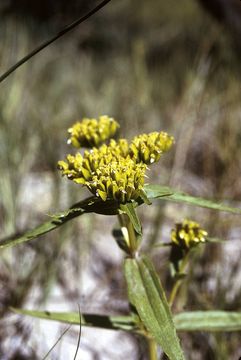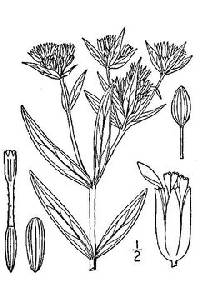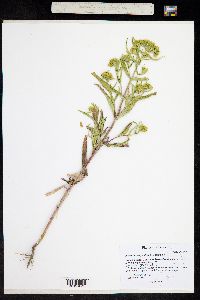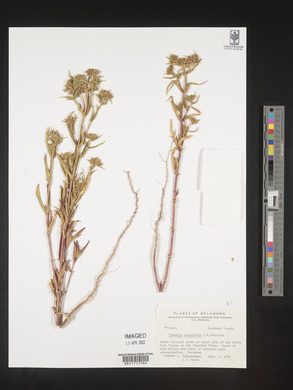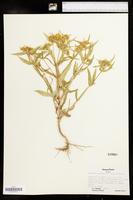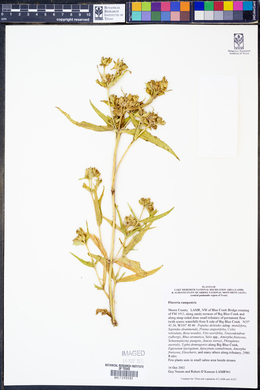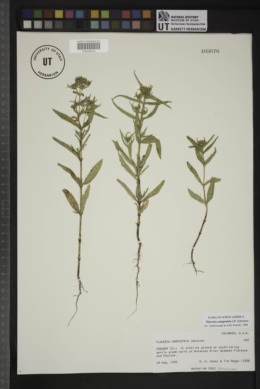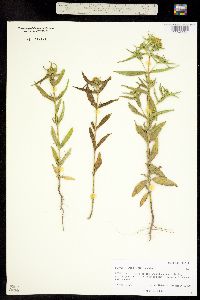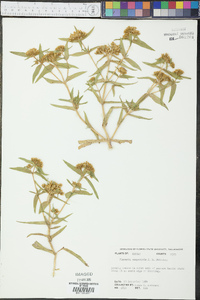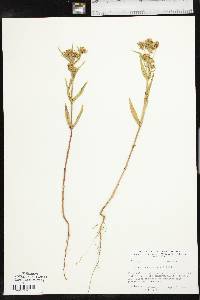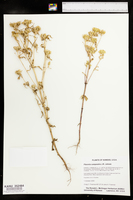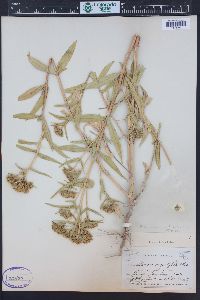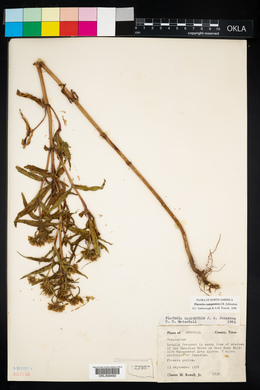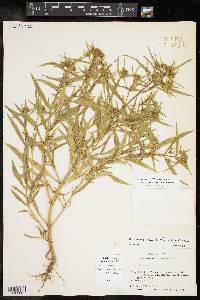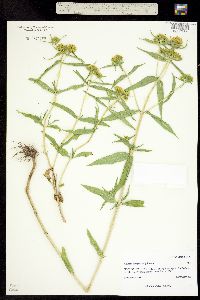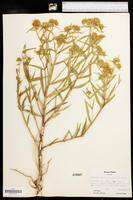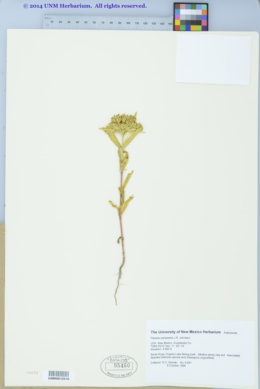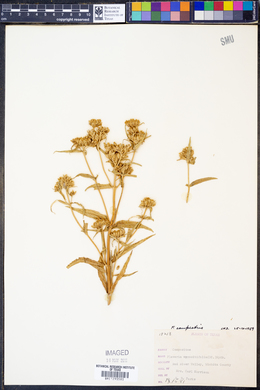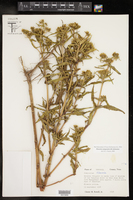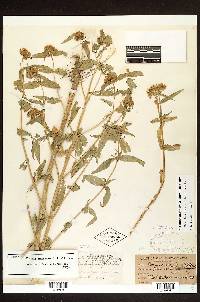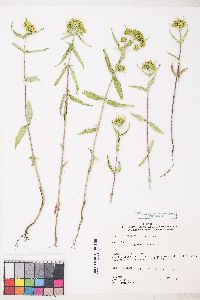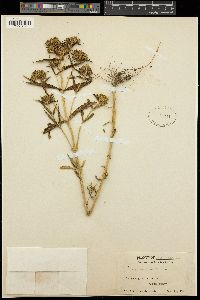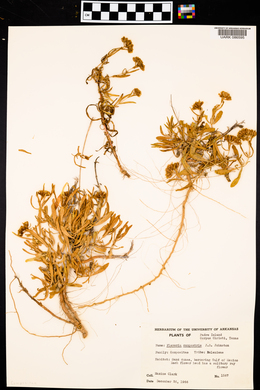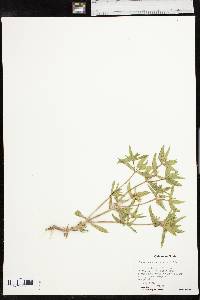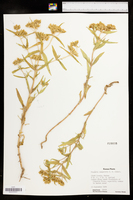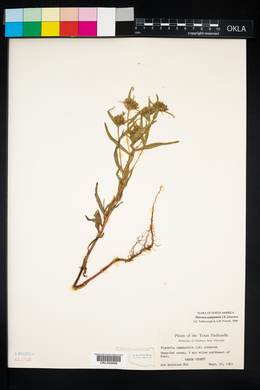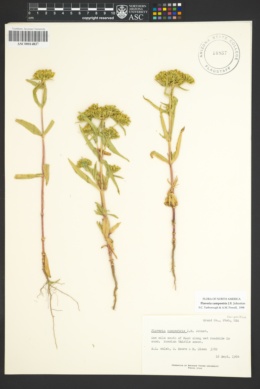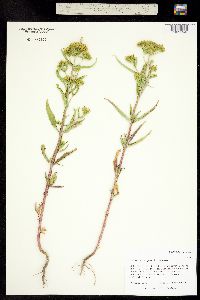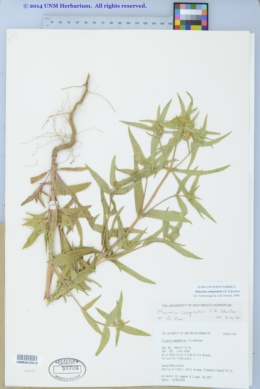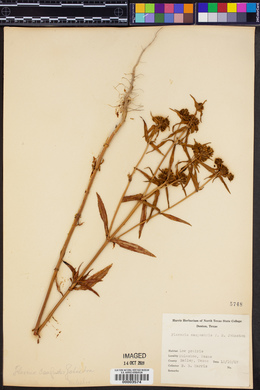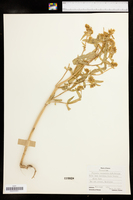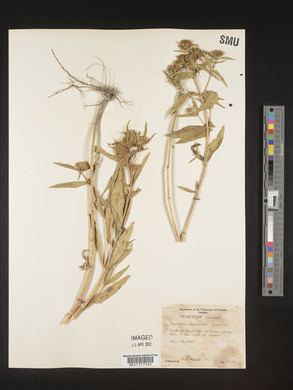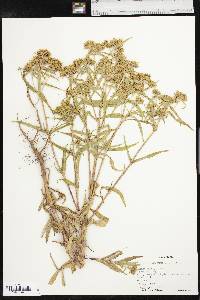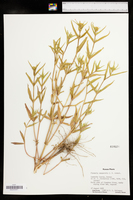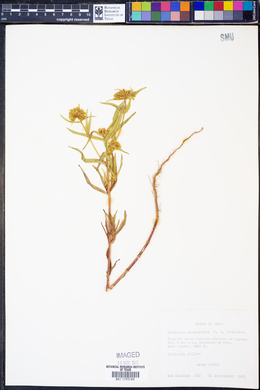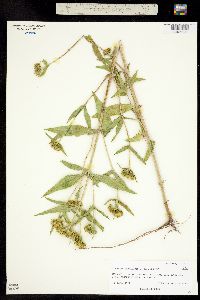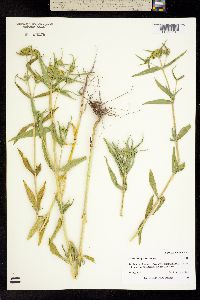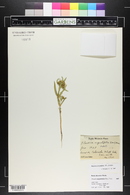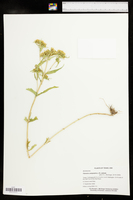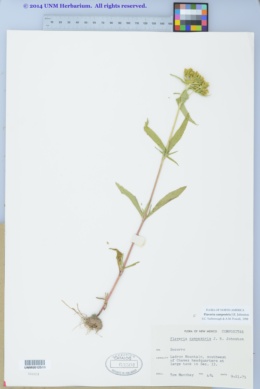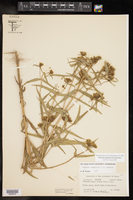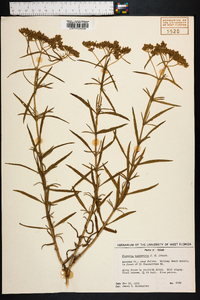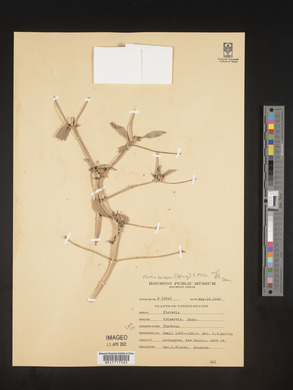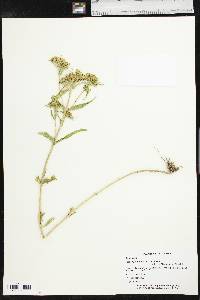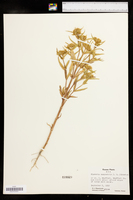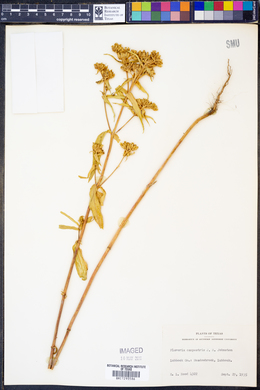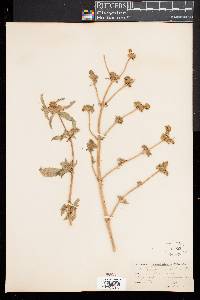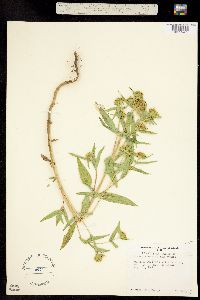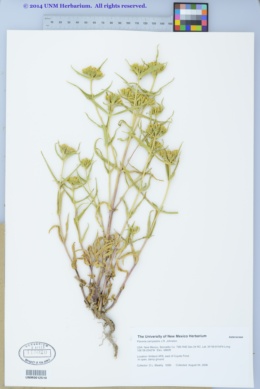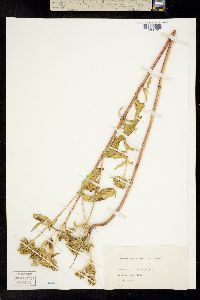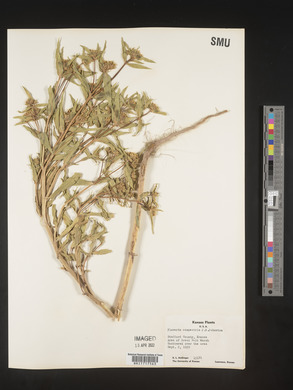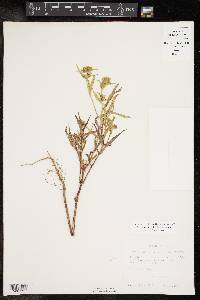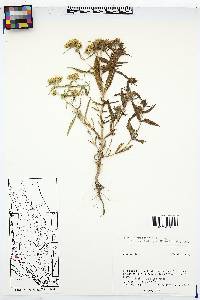Flaveria campestris
|
|
|
|
Family: Asteraceae
Alkali Yellowtops
|
Annuals, 18-70(-90) cm (delicate or robust, mostly glabrous). Stems usually erect (tufted-pubescent at nodes). Leaves sessile; blades linear-lanceolate to lanceolate, 30-90 × 6-22 mm, bases barely connate, margins strongly to weakly serrate or spinulose-serrate. Heads (10-)15-100+, in tight subglomerules in corymbiform arrays. Calyculi of 2 linear-lanceolate bractlets 1-3 mm. Involucres urceolate or oblong, 6-7 mm. Phyllaries 3, elliptic, obovate, or oblong-obovate. Ray florets 0 or 1; laminae yellow, ovate, 1.5-2.5 mm (apices notched). Disc florets 5-6(-8); corolla tubes 0.8-1.3 mm, throats funnelform, 1.2-1.7 mm. Cypselae oblanceolate, linear, or oblong, 2.8-3.6 mm (those of rays longer by ca. 0.2 mm); pappi 0. 2n = 36 (18). Flowering May-Nov. Saline soils, lake, pond, stream margins, flood plains, and disturbed pastures; 1000-1800 m; Ariz., Colo., Kans., Mo., N.Mex., Okla., Tex., Utah. Flaveria campestris is distinguished by subglomerulate capitulescences with 5-6(-8) florets per head, subtended by 3 leafy bracts, keeled phyllaries, and linear-lanceolate leaves with serrate or spinulose-serrate margins, and its distribution. The prevalence of F. campestris fluctuates greatly from year to year, generally depending on the existence of wet, saline habitat.
FNA 2006 Duration: Annual Nativity: Native Lifeform: Forb/Herb General: Annuals herbs, 20-70 cm tall; stems usually erect, often tufted-pubescent at nodes, otherwise glabrous. Leaves: Opposite and sessile; blades linear-lanceolate to lanceolate, 3-9 cm long by 6-22 mm wide, bases weakly connate (bases partially wrapped around the stem), and margins serrate, the serrations sometimes spine-tipped. Flowers: Flower heads yellow, radiate or discoid, and arranged in tight flat-topped clusters, the clusters subtended by 3 leaves; calyculi (extra set of bracts below each flower head) of 2 tiny linear-lanceolate bracts, 1-3 mm long; involucre (ring of bracts wrapped around the flower head) urn-shaped to oblong, 6-7 m high, the bracts (phyllaries) 3 per head, elliptic or oblong-obovate; ray florets absent, or sometimes 1 per flower head, the lamina (ray petal) yellow, ovate, and tiny, 2 mm long, with a notched apex; disc florets 5-8, the corollas yellow, 2 mm long. Fruits: Achenes oblanceolate, linear, or oblong, 3 mm long; without any pappus on top. Ecology: Found in saline soils at lake, pond, and stream margins, in floodplains and disturbed pastures, from 3,000-6,000 ft (914-1829 m); flowers May-Nov. Distribution: CO and NM, east to MO, OK and TX Notes: Look for an opposite-leaved, yellow-flowered annual Asteraceae with the flower heads in tight flat-topped clusters, each cluster subtended by a set of 3 bracts that look the same as the leaves. F. trinervia also has yellow flowers and opposite leaves, but that species has flower heads clustered together in tight, nearly spherical clusters which are sessile in the leaf axils. (F. campestris-s flat-topped flower clusters are located on the stem tips.) F. chlorifolia is perennial with stems which are often decumbent and leaf bases that are connate-perfoliate (the leaf bases wrap fully around the stems). Ethnobotany: Unknown Etymology: Flaveria is from the Latin Flavus, meaning yellow; campestris means found in plains or other flat habitat. Editor: AHazelton 2016 Rather coarse annual 3-9 dm, glabrous, or sometimes slightly villous at the nodes; lvs lanceolate, sessile, remotely serrulate, 3-7 cm נ6-20 mm; heads cylindric, in glomerules subtended by leafy bracts; invol bracts 3, 5-7 mm, with 2 much smaller calyculate ones at base; rays solitary, 2 mm; disk-fls 3-4; receptacle naked; pappus none. Low ground; Colo. and Kans. to Mex., and intr. in Mo. Aug.-Oct. Gleason, Henry A. & Cronquist, Arthur J. 1991. Manual of vascular plants of northeastern United States and adjacent Canada. lxxv + 910 pp. ©The New York Botanical Garden. All rights reserved. Used by permission. |

